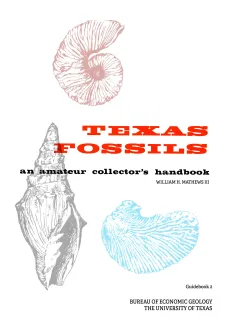
Publication Details
Get the Publication
$10.00
Abstract/Description:
Almost everyone has seen the fossilized remains of prehistoric plants or animals. These might have been the skeleton of a gigantic dinosaur, the petrified trunk of an ancient tree, or the shells of snails or oysters that lived in the great seas that covered Texas millions of years ago. Each year more and more people are learning that these fossils are more than mere curiosities. Instead, they are realizing that a good collection of fossils provides much information about the early history of our earth, and that fossil collecting can be a most enjoyable, fascinating, and rewarding hobby. It is for these people that Texas Fossils was written. This publication is primarily an amateur collector�s handbook and as such offers many suggestions and aids to those who would pursue the hobby of fossil collecting. It tells, for example, what fossils are, where and how to collect them, and how they are used. Suggestions are made as to how the specimens may be identified and catalogued, and there are discussions and illustrations of the main types of plant and animal fossils. Included also is a simplified geologic map of Texas and a brief review of the geology of the State. Texas Fossils is not a comprehensive study of the paleontology of Texas. Rather, it deals primarily with the more common species that the average collector is likely to find. These fossils are illustrated in the plates and figures, and these illustrations should be of some help in identifying the specimens in one�s collection. Included for completeness, however, are sketches and descriptions of some of the more rare and unusual fossils, and, for general interest, there are illustrations and descriptions of many of the extinct reptiles and mammals that once inhabited this State. In addition, a group of selected references has been included for the reader who wishes to know more about earth history and paleontology. Many of these publications provide references of a more technical nature for the more advanced or serious collector, and some of them list excellent collecting localities. A minimum of technical terminology has been used, but terms not commonly found in dictionaries, or which have not been explained in the text, are defined in the glossary.